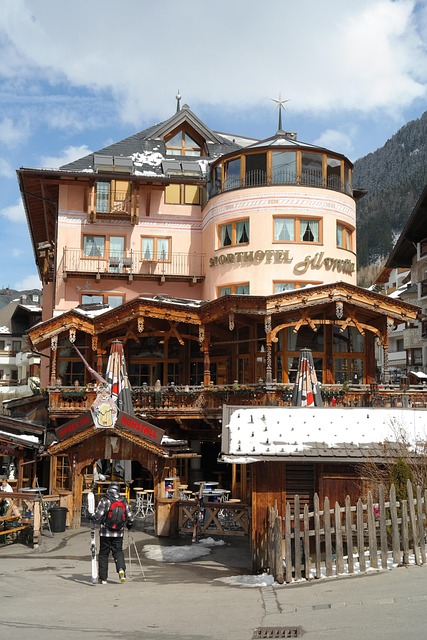CoolSculpting locations offer non-invasive fat reduction through cryolipolysis, under medical supervision. Stricty licensed clinics prioritize patient safety with thorough inspections and regulations. Trained professionals evaluate health, guide procedures, and ensure minimal downtime. Safety measures include pre-screenings, advanced cooling tech, sterile environments, and post-care. A consultation determines suitability; temporary side effects are common but manageable. Choose licensed facilities for effective, personalized fat reduction with convenient scheduling.
“Discover the transformative power of CoolSculpting—a non-invasive fat-reducing treatment that’s revolutionizing body contouring. This article explores everything you need to know about licensed CoolSculpting clinics, from understanding the procedure to ensuring patient safety. We delve into the crucial role of medical supervision and provide tips for choosing the ideal clinic as your CoolSculpting location. Learn how this innovative therapy can help you achieve a slimmer, more confident you.”
- Understanding CoolSculpting: A Non-Invasive Fat-Reducing Treatment
- Licensing and Regulations for CoolSculpting Clinics
- The Role of Medical Professionals in CoolSculpting Procedures
- Patient Safety Measures During CoolSculpting Sessions
- What to Expect Before and After CoolSculpting Treatments
- Choosing the Right CoolSculpting Location: Tips for Patients
Understanding CoolSculpting: A Non-Invasive Fat-Reducing Treatment

CoolSculpting is a non-invasive fat-reducing treatment that has gained popularity as a safe and effective alternative to surgical procedures. This advanced technology utilizes cryolipolysis, a process that freezes and destroys fat cells in targeted areas. By cooling fat to temperatures below -4°C, CoolSculpting effectively reduces the size of fat cells without impacting surrounding skin or muscle tissue. The treatment is typically performed over several sessions, allowing for gradual results.
A licensed CoolSculpting clinic, often located in urban centers, ensures that patients receive professional medical supervision throughout the process. This is crucial as proper administration and monitoring are essential to achieving optimal results and minimizing potential side effects. With its non-surgical nature, CoolSculpting offers a convenient option for individuals seeking fat reduction in specific areas, such as belly, flanks, or thighs, without the downtime associated with invasive procedures.
Licensing and Regulations for CoolSculpting Clinics

CoolSculpting clinics, like any medical facility offering aesthetic services, are subject to stringent licensing and regulatory requirements. These standards ensure patient safety and quality care during fat-freezing treatments. Each CoolSculpting location must obtain a license from their respective governing bodies, typically state or national health departments. The process involves rigorous inspection of the clinic’s facilities, equipment, and staff qualifications.
Regulations cover various aspects, including facility sanitation, staff training, and adherence to specific protocols during procedures. Medical professionals overseeing CoolSculpting sessions are required to maintain up-to-date certifications and follow evidence-based practices. This ensures that patients receive safe, effective treatments in a regulated environment, fostering trust in the integrity of CoolSculpting clinics.
The Role of Medical Professionals in CoolSculpting Procedures

At a licensed CoolSculpting clinic, trained medical professionals play a pivotal role in ensuring patient safety and achieving optimal results during fat-freezing procedures. These experts are responsible for thoroughly evaluating each patient’s medical history and determining their suitability for CoolSculpting. With their knowledge of anatomy and experience in non-invasive treatments, they guide patients through the entire process, addressing any concerns and providing post-procedure care.
During the treatment, medical professionals supervise every step, carefully placing the cooling devices on targeted areas to freeze and kill fat cells. Their expertise enables them to adjust settings and techniques based on individual needs, maximising effectiveness while minimising discomfort. After the procedure, these professionals monitor patient progress, offer guidance on recovery, and schedule follow-up appointments to assess results, ensuring a safe and successful CoolSculpting experience in a licensed clinic location.
Patient Safety Measures During CoolSculpting Sessions

At a licensed CoolSculpting clinic, patient safety is paramount during fat-freezing sessions. Before beginning any treatment, medical professionals thoroughly assess each patient’s health history and current conditions to ensure CoolSculpting is suitable for them. During the procedure, patients are monitored closely by trained staff using advanced cooling technology designed to target and freeze fat cells without damaging surrounding skin or tissue.
Safety measures extend beyond the procedure itself. Clinics adhere to strict hygiene protocols, utilizing single-use materials and sterile environments to prevent infections. Post-treatment care includes guidance on managing temporary side effects like numbness or swelling, with follow-up appointments ensuring optimal results and addressing any patient concerns. Choosing a licensed CoolSculpting location ensures these safety measures are in place, providing patients with confidence and peace of mind during their journey towards achieving a slimmer, more contoured figure.
What to Expect Before and After CoolSculpting Treatments

Before your CoolSculpting treatment at a licensed clinic, a consultation with a qualified medical professional is essential. During this session, they will assess your medical history, discuss your expectations, and determine if CoolSculpting is suitable for you. The provider will also explain the procedure, including any potential side effects and aftercare instructions.
After the treatment, most patients experience minimal discomfort and can immediately resume their regular activities. However, it’s normal to expect some temporary flu-like symptoms, such as fatigue and chills, as your body reacts to the fat-freezing process. The treated area(s) may feel numb for a few days, and you might notice some bruising or swelling, which typically subside within a week. It’s crucial to follow post-treatment guidelines, including staying hydrated and getting plenty of rest, to ensure optimal results and a speedy recovery.
Choosing the Right CoolSculpting Location: Tips for Patients

When considering a CoolSculpting clinic, patients should look for licensed facilities offering fat-freezing services under professional medical supervision. This ensures safety and effectiveness. Additionally, verifying the clinic’s reputation, reading patient reviews, and ensuring they provide personalized consultations are essential steps in making an informed decision.
Choosing a location that aligns with your convenience and accessibility is crucial. Patients should consider factors like proximity, appointment availability, and the overall comfort of the facility. A well-maintained, clean environment and friendly staff can significantly enhance the patient experience.
